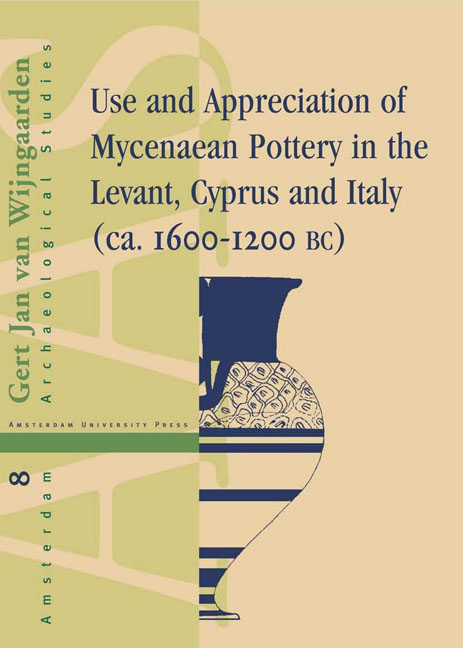20 - The Role of Mycenaean Pottery in Mediterranean Exchange
Published online by Cambridge University Press: 10 February 2021
Summary
INTRODUCTION
I argued in the first chapter to this book, that supra-regional exchange in the eastern Mediterranean was complex and conducted on various social levels. Many groups of people were involved in these exchanges, among whom were palace-based traders and independent merchants. Considering the complexity of supra-regional trade, the question of who exchanged and transported the Mycenaean ceramic vessels is not the right one to ask. Rather, we should investigate the interest of particular groups in the distribution of Mycenaean pottery in the Mediterranean.
The motivations which constituted the rationale behind Bronze Age trade in the Mediterranean probably ranged from the purely diplomatic to the purely commercial, while different actors may not have had the same motivations at various points in the exchange networks. Since Mycenaean pots probably travelled through various modes of exchange before being deposited in the archaeological record, it is useless to ask about the type of exchange or the specific mechanisms of which these vessels have been part. Instead, it seems relevant to investigate the role of the Mycenaean pots in comparison to other trade goods.
ROLE OF THE CYPRIOTS
The large quantities of Mycenaean pots in Cyprus, the size of which is small in comparison which such vast areas as Anatolia, the Levant, Egypt and the central Mediterranean, indicates that the island played a special role with regard to the distribution of Mycenaean pots in the Mediterranean. Such a special role is emphasised by the observation that in the Levant and Egypt, Cypriot and Mycenaean pots are often found together. Cyprus had a long tradition of pottery export to the Levant and Egypt and it seems logical to assume that the Mycenaean pots were supplemented to an already existing international circulation of Cypriot ceramics.
During the Late Bronze Age, a complex urbanised society developed in Cyprus which was related to the exploitation of copper resources for external exchange. The importance of copper production and of international trade for the development of complex societies in Cyprus gave items relating to these activities a special significance.
- Type
- Chapter
- Information
- Use and Appreciation of Mycenaean Potteryin the Levant, Cyprus and Italy (1600-120O BC), pp. 275 - 280Publisher: Amsterdam University PressPrint publication year: 2002



